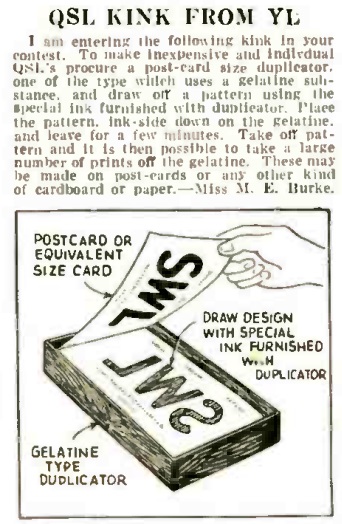 The venerable hectograph made an appearance 80 years ago this month in the pages of the July 1937 issue of Shortwave and Television magazine. Today, it’s trivially simple to print numerous copies of a document at home with an inkjet or laser printer, or to go to the local copy store and print them there. But this hasn’t always been the case. 80 years ago, printing in quantity was more or less a secret art practiced only by professional print shops.
The venerable hectograph made an appearance 80 years ago this month in the pages of the July 1937 issue of Shortwave and Television magazine. Today, it’s trivially simple to print numerous copies of a document at home with an inkjet or laser printer, or to go to the local copy store and print them there. But this hasn’t always been the case. 80 years ago, printing in quantity was more or less a secret art practiced only by professional print shops.
But there was one exception, and that exception was the hectograph, or gelatine duplicator as it’s called here. The desired image was drawn or typewritten onto paper using special ink, that ink was transferred to gelatine, and then copies could be made onto any paper. The hecto- prefix implies that a hundred copies could be made, although that’s more of an upper limit. Nonetheless, for small print jobs, the hectograph provided about the only method of home printing for many years.
This was not lost on one Miss M.E. Burke, who was apparently a shortwave listener in need of an inexpensive method to produce SWL or QSL cards. She used a gelatine duplicator, simply printed them at home, and then sent the idea to the magazine, which agreed that it was a good idea.
Back in the day, hectographs could be purchased wherever office supplies were sold. My own entry into the world of publishing came when I got a toy hectograph for Christmas. I soon graduated to a more professional model, on which I was able to prepare typewritten newspapers.
Since they are obsolete technology, you can’t buy a hectograph today. But fortunately, they are so simple that you can make one at home, and I have full instructions at my website. All of the materials you will need are readily obtainable, and you’ll be on your way to creating a vintage style QSL card or other printed item.
